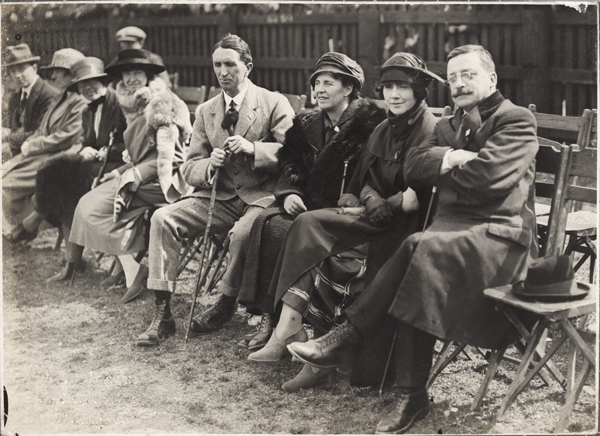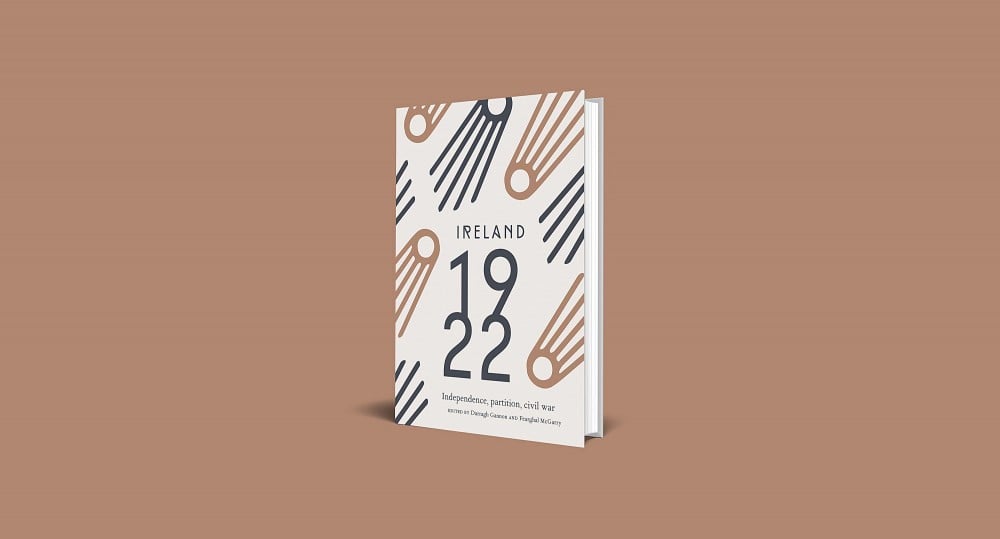3 August 1922: The Abandoned Tailteann Games
Playing Under the National Flag: Sport Nationality and Partition
By Paul Rouse
The plan was a clear one: on 3 August 1922 the new Irish Free State would stage the opening ceremony of a major two-week sporting and cultural festival. That festival—the Tailteann Games—was to be modelled on the modern Olympic Games and planning for it began in earnest at Cabinet meetings in February 1922.
While the modern Olympic Games were the model, the inspiration for the Tailteann Games was rooted deep in the traditions of Irish nationalist history and mythology. The Tailteann Games were presented as a revival of a festival supposedly held at Tara, from 632 bc until the last record of the event in ad 1168—just before the ‘English invasion’ of 1169. The Games were said to have involved athletic and equestrian events and cultural contests in poetry, music and dancing, held on a peaceful, unified island. The historical record does not sustain these claims, but the message was clear: despite centuries of invasion and oppression (political, economic and cultural) the Irish had survived and so had their unique culture.
J.J. Walsh, an Easter 1916 veteran appointed to the Cabinet position of Postmaster General, was the driving force behind the Tailteann Games. In Walsh’s vision, they would be open to Irish-born people and to people of Irish descent around the world.¹ Even as disagreement over the Anglo-Irish Treaty deepened from split to civil war, plans to stage the Games progressed. Eventually, though, as violence worsened, the American team sent a cable that its members would not travel, and postponement became unavoidable.²
The programme for the games had emphasised the fault-lines of Irish sport. The competitions comprised Gaelic games, athletics and a range of Olympic sports—but no soccer or rugby. This was an exclusion based on a mentality that understood as an ‘imperative the expression of nationality through sport’. This mentality had led the Gaelic Athletic Association (GAA) to operate a series of rules that banned from its membership those who played or watched rugby, soccer, hockey or cricket. J.J. Walsh was entirely in sympathy with this approach; it was a mentality, however, that was unable to accommodate the many who, in their sporting choices, ‘were swayed by personal conviction and social context’, and not by matters of politics or identity.³
Under the initiative of Walsh, a sum of £10,000 had been made available to redevelop Croke Park, the home of the GAA, to host the opening and closing ceremonies of the Tailteann Games. It was the first in a series of government decisions in the 1920s that privileged the position of the GAA in the Irish Free State.
For their part, those who controlled rugby reacted to partition by
pretending it was not happening; the provincial structure of rugby
permitted an independence of local action that suited those who
organised rugby in Ulster. But the overarching ambition to
preserve the unity of Irish rugby was challenged by practicalities
relating to the international team. The emergence of international
sporting competitions in the nineteenth century as a key marker of
national identity, replete with the symbols of statehood, created
obvious problems. What nation did the Irish team now represent? On
which side of the border would it play its international matches?
What
flag would fly? What anthem would be played?
That a significant constituency of its membership was unionist in its politics created obvious difficulties; that rugby’s leadership appeared similarly unionist in its sympathies created further tensions. In October 1922 a delegate from Bective Rangers club told the AGM of the Leinster Branch of the Irish Rugby Football Union (IRFU) that the men who controlled rugby were unrepresentative and impeding the game’s progress:
Rugby football could be made the national pastime of Ireland, but not until its control had been democratised. It had been deliberately excluded by the organisers of the Tailteann Games. He, personally, regarded that as a humiliation, but he, and no doubt many others, guessed the reason. It was because the present control was undemocratic, unsympathetic and almost un-Irish.⁴
But the old administration was not about to give way. There was no change to the jersey. In terms of grounds, the IRFU developed Ravenhill in Belfast; Ireland’s home matches would now be split between Dublin and Belfast.⁵
More problematic was the flag. Although the IRFU designed its own flag in 1925, critics argued that ‘when Ireland played at Lansdowne Road, she should do so under the national flag’.⁶ This was objected to by committee members who noted that popular interest in rugby was drawn from opposing political traditions and that only the flag of the IRFU should fly at home matches. There the matter lay until 1932 when a popular campaign from certain southern rugby clubs, politicians and members of the public saw the IRFU agree that the tricolour would fly beside the IRFU flag at international matches in Dublin.⁷
Rugby’s fine balancing act drew occasional criticism: in 1936 the decision to postpone a match between Cork Constitution and Sunday’s Well because it fell on the day of the funeral of King George V was condemned by a Cork Constitution delegate as pandering ‘to satisfy a certain section’.⁸
Soccer, alone of the major sports, assumed a new partitioned structure of governance, with the Irish Football Association (IFA) in Northern Ireland and the Football Association of Ireland (FAI) in Irish Free State. In 1922 the most immediate manifestation of change came in the Irish Cup. Until 1922 that was an all-Ireland competition, played annually since 1881 between the island’s leading soccer clubs. Then, in spring 1922, two Irish Cup finals were played within a fortnight of each other, one in Dublin and the other in Belfast.
There was extreme bitterness between the IFA and the FAI. Something of a working compromise emerged, in time, for domestic competitions—the IFA controlled competitions north of the border and the FAI controlled the south. The international aspect, however, proved much more difficult. In 1922 the government of the Free State recognised the legitimacy of the FAI and supported sending a team to represent Ireland at the 1924 Paris Olympics. But the IFA rejected this legitimacy, its attitude later encapsulated in a memorandum: ‘The Irish FA functioned harmoniously until a political movement inspired by a religious element caused a re-adjustment of relations between Ireland and the British Government.’⁹
Ultimately, both associations fielded teams called ‘Ireland’ and claimed the right to draw international players from wherever they wished on the island. Indeed, it was only in the 1950s that this practice ceased; by then, more than forty players had lined up for ‘Ireland’ teams selected by both competing soccer bodies; matters of identity could be suborned to the desire to win matches.
Time and again, it was this idea of the love of play, of watching play, of organising sport, of trying to win, that undermined the attempts of ideologues to infuse sport with a specific meaning.
This was manifest when the Free State government finally staged the Tailteann Games in 1924. What emerged was the biggest sporting event in the world that year, bigger even than the Paris Olympics. There was no soccer or rugby, but this did not ensure a triumph for Gaelic games. Instead, it was modern mechanised sports—motorcycle, speedboat and aeroplane races—that were the most popular, wooing people fascinated by speed and danger. Big favourites with the crowd were the northern competitors, J.W. Shaw and Joe Craig.¹⁰ It was a reminder that partition mattered when it came to sport—except when it didn’t matter at all.
Extracted from Ireland 1922 edited by Darragh Gannon and Fearghal McGarry and published by the Royal Irish Academy with support from the Department of Tourism, Culture, Arts, Gaeltacht, Sport and Media under the Decade of Centenaries 2012-2023 programme. Click here to view more articles in this series, or click the image below to visit the RIA website for more information.






















